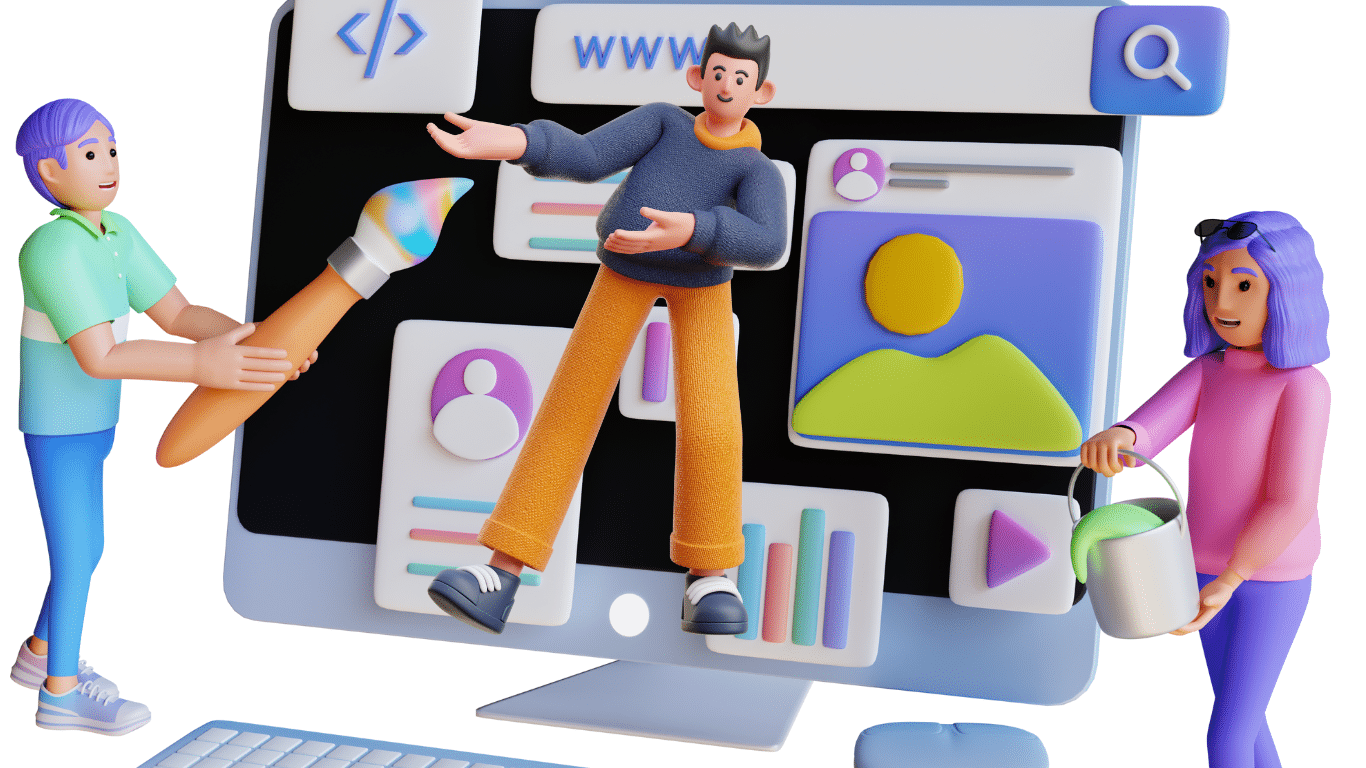To make a 3D animated character involves techniques and artistic creativity in an exciting process. This piece will take you through the crucial stages of creating a 3D animated character starting with basic ideas to the point where it is ready for final animation. Whether you are new in this area or an advanced artist who wants to sharpen your skills, our purpose is to show you how to create a 3d animated character. This guide will efficiently show you how to make 3d animation for beginners.
Step 1: Concept and Design
Research and Inspiration
Before you begin creating your own, it is essential to gather ideas for developing a character from many sources, such as movies, video games, and artwork. Find examples of the different styles and personality traits you require for the design.
Sketching
Start by making a sketch of your character, whether on paper or digitally, paying attention to general outlines and dimensions. Then, little by little, introduce details. This now means one should create several sketches done at various angles so that one can appreciate how his character appears when viewed from every side.
Character Sheet
Create a character sheet that shows the character’s front, side, and back perspectives under construction. This will help make your design work more consistent by providing a reference point.
Step 2: 3D Modeling
Choosing Software
It is necessary to determine a 3D modeling software that is convenient for you and meets your skills. Some popular applications include Blender, Autodesk Maya, ZBrush, and 3ds Max. Each software has strengths; therefore, select one that applies well to your task.
Base Mesh
To initiate, create a fundamental cage, an unsophisticated, low-polygon representation of the person you want to model. Concentrate on correct general appearance and proportions. This will be an excellent platform for adding more detail later.
Adding Detail
As soon as you finish the base mesh, start working on your character by adding more detail to it. Use sculpting tools to help sharpen its form, give it some muscles, and define facial features. Be keen on anatomy to maintain accurate proportions of your characters.
Retopology
Do retopology after sculpting to create a refined mesh with low polygons. This move is important because it ensures the character is ready for animation and rendering.
Step 3: Texturing
UV Unwrapping
The 3D model should be unwrapped, converting it to a 2D representation showing its surface. With this procedure of UV mapping, you can now layer suitable textures on your character.
Creating Textures
You can use software like Adobe Photoshop, Substance Painter, or Mari to create textures for your character. Begin with base colors and then gradually add details like skin texture, clothing patterns, or accessories. Take reference so your texture can be realistic or stylized according to your design.
Applying Textures
Utilize the textures you’ve decided on in your 3D modelling tool. Modify some material attributes, like glossiness and transparency, for example, so that they appear as desired. You may need to check how they appear under different lightings, for instance, whether in sunny skies or dark alleys, depending on their proposed utilization, so that not only one set stands out.
Read also – What is the 3D Animation Production Pipeline and Process?
Step 4: Rigging
Building the Skeleton
Build a skeleton for your character that will enable her to be animated. It is a collection of bones and joints that regulate the movement of the various parts of the character.” Arrange the bones so they follow the characters’ existing anatomy.
Skinning
Skinning is taking the 3D model and attaching it to the rig so that you can see the bones moving when they are moved. When you move the bones, the character’s mesh deforms correctly. Adjusting the weight painting will help you control the amount of influence every bone has on the neighboring vertices.
Adding Controls
Design control handles so that character animation becomes simpler. These controls could be basic shapes or more intricate forms that allow you to move your character in familiar routes. Establish inverse kinematics (IK) and forward kinematics (FK) to enable different kinds of motion.
Step 5: Animation
Planning the Animation
To make an animation, one can start planning by creating a storyboard or an animatic. This will help in seeing how different actions will lead to one another, consequently ensuring that there is continuity. This should be done considering the other animations to be made.
Keyframe Animation
To commence, write down initial poses that mark important aspects of the character used in animation. Interpolation is important as it helps join different poses seamlessly.
Refining the Animation
Enhance the animation with secondary motions, fine-tuning timing, and smoothing out movements. Mind details like facial expressions, hand gestures, or body language will make your character look more natural.
Rendering and Exporting
When the animation is finished, render the frames using your 3D software. Modify lighting, camera angles, and rendering settings for the desired visual quality. Produce the final output of the animation in the desired format for further use.
In a Nutshell
Creating a 3d animated character is a difficult but rewarding process based on a combination of creative and technical skills. These steps will help you make your character live from the first idea to the last animation created by you. Without practicing or experimenting, you will never be able to pass through every stage, so go ahead and try alternative techniques and instruments. Hard work and tenacity are all you need to know how to make 3d animation for beginners to tell interesting stories.
FAQs
What software is best for creating 3D animated characters?
For creating 3D animated characters, you can use popular applications like Blender, Autodesk Maya, ZBrush, and 3DS Max. Each application has its benefits and drawbacks during the production process for a particular character.
How long does it take to create a 3D animated character?
The process of making a 3D robot graphic may vary greatly based on the kind of robot and how complex or detailed programmers want to go with their work since some take longer than others or are done quickly. For example, these tasks could take only a few hours, whereas some might consume up to 24 hours.
What skills are needed to create a 3D animated character?
Creating a 3D animated character necessitates combining artistic and technical skills. These include proficiency in 3D modeling software, anatomy and movement, texturing, rigging, and animation.
Can I create a 3D animated character without any prior experience?
For novices, there is a plethora of resources to gain the essential skills, even though it helps if you have some background experience in it all already. Besides tutorials, internet-based classes can be helpful too since they are self-explanatory, plus they give one room for regular practice, thereby facilitating mastery in 3D animation.



